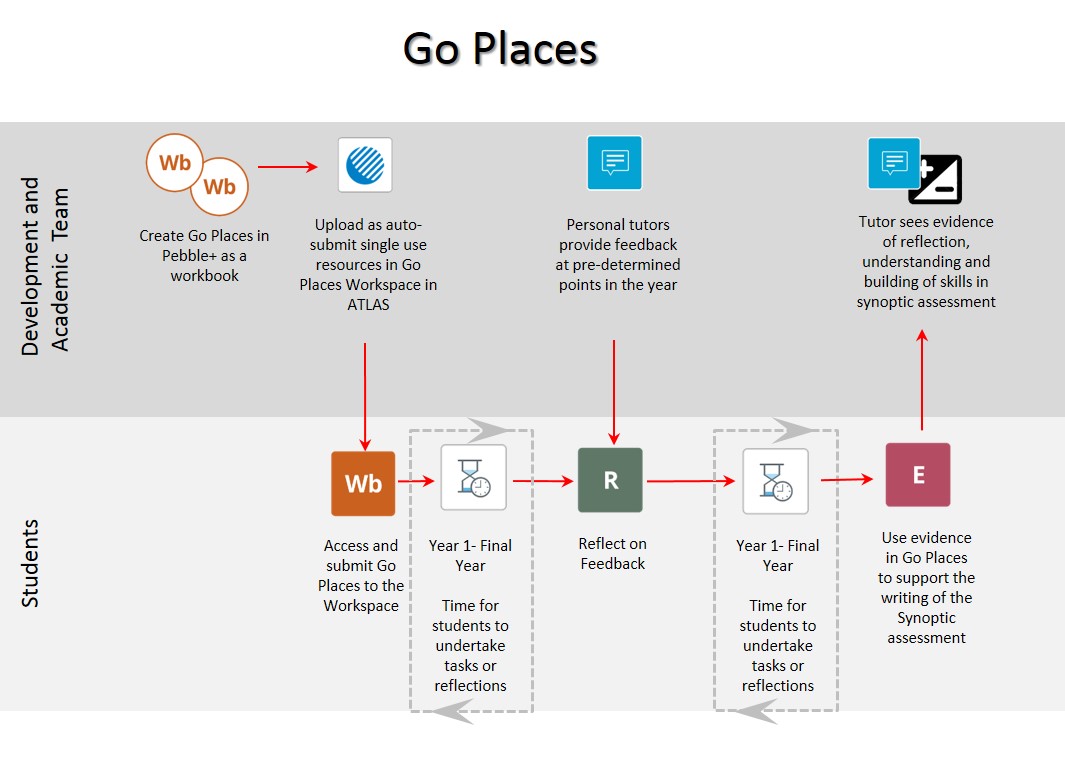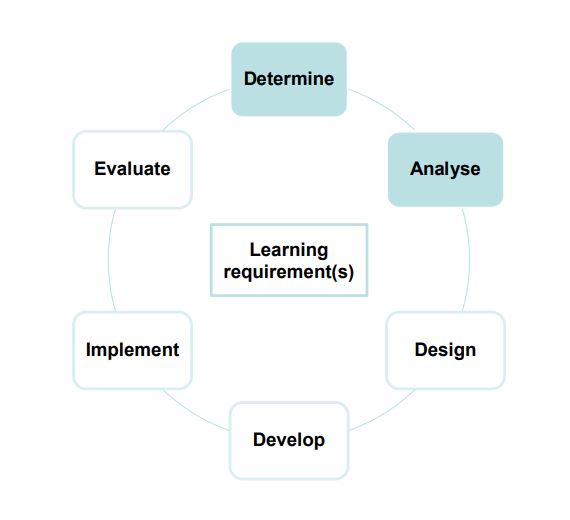PebblePad is an ePortfolio tool which is widely used in the educational sector and in some professions since 2004. It is a flexible multi-purpose ePortfolio tool which can be integrated into teaching and learning at all academic levels, providing an excellent platform for recording and reflecting on extra-curricular activities (including engagement with employment, volunteering etc) and which is available to students to refer back to, and update, after they graduate.
In 2016/17, a large scale pilot of PebblePad, included all Schools and students studying at Levels 3 to 7, was carried out across the institution, led by the ePortfolio Steering group. The pilot was highly successful and PebblePad is now available for use by all students and staff from the start of the 18/19 Academic Year.
Arts and Humanities were the 3rd biggest user in the pilot with our ‘Go Places‘ portfolio, an employability and skills resource built in Pebble+ and made available to all first years in the departments of English, Culture and Philosophy and History, Languages and Global Studies. This has now been extended to all students in those departments, and also the department for Journalism and Media. Go Places stays with the students throughout their degree and provides a framework to build up a a repository of information, evaluate professional attributes and also a space to hold reflections on their time at University, all of which can evidence how they have grown as a person and which can be drawn upon for their synoptic assessment in their final year. The image below shows the process that is taken from start to finish or download a Go Places Visual Representation PDF:

But this is just one way to use PebblePad, there are many ways to use it to transform formative or summative work.
In the School of Arts and Humanities, LTSU provide full support for any member of staff who wishes to use PebblePad with students or even as a personal reflective tool for themselves. We can do this through team or individual training, helping design the resources or being a buddy in the classroom when you launch the resource with students.
Before choosing to use PebblePad, it will be useful to think about the first two elements (Determine and Analyse) of the DADDIE model developed by Daniel Scott from the Digital Practice team in Organisation Development.
These elements should be considered through the lens of what pedagogical problem/s you are trying to solve. Also consider:
• What do students need to do / complete / evidence?
• What do you and students need to get out of the assessment?
• Think of ‘who, what, why, when, where, how’ (Scott, 2018)
The Library and Learning Resources team have provided a list of key benefits of PebblePad that may help your thinking in how you could implement it in your teaching:
- Supports synoptic assessment. This flexible tool can provide effective support for the synoptic assessment requirements resulting from Curriculum Refresh
- Supports personal tutoring and mentoring. There is evidence from other institutions that PebblePad is an easy to use tool which can support personal tutoring, coaching and mentoring, including multiple mentors and/or external mentors and/or peer mentoring
- Supports reflection and a deeper understanding of a student’s progress. There is evidence that using an ePortfolio promotes a greater reflection by a student on their learning
- Consistency. Wide scale use across the University means that students can bring together in one place their evidence and assets of achievement from a number of activities over time (formal learning activities as well as informal ones such as employer engagement or volunteering). This allows them to reflect not only on individual activities but also longitudinally over all their experiences
- Personalised feedback. It is possible to provide personalised feedback that engages students and improves attainment and retention. Feedback processes can be built as a two-way dialogue with students and academic staff, Professional Services staff, mentors and external assessors
- Flexibility. Students can record evidence in different digital formats and PebblePad supports different types of assessment, including multimedia assessment
- Enhances employability. Students can design professional looking portfolios of their achievements which they can share outside of the University and can keep up to date (and add to) after they graduate.
If you are an AAH staff member and wish to know more, please email us at aah.ltsu@ntu.ac.uk and we can meet to talk through your options (we may even make the coffee!
SCOTT, D., 2018. Learning technology: a handbook for FE teachers and assessors. Northwich: Critical Publishing. ISBN 9781912096930
Rachel Challen
Principal Lecturer (Learning, Teaching and Staff Development Manager)
Athena SWAN Champion
Ext: 83895 rachel.challen@ntu.ac.uk
MAE011(Clifton) DICe S04 (City)
